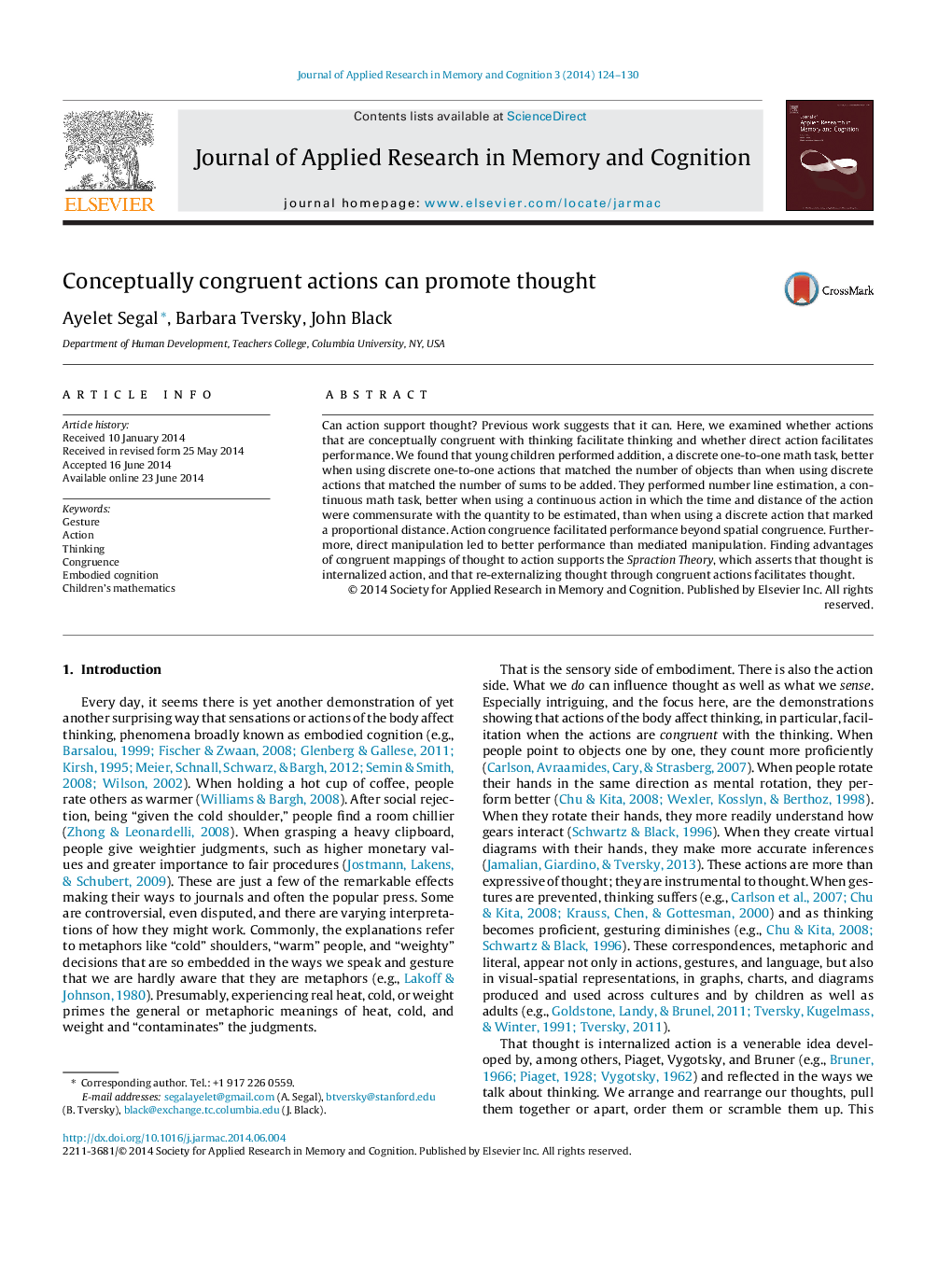| Article ID | Journal | Published Year | Pages | File Type |
|---|---|---|---|---|
| 881708 | Journal of Applied Research in Memory and Cognition | 2014 | 7 Pages |
•Can action support thought? We found that making actions that are conceptually congruent with thinking facilitates performance.•Children performed addition, a discrete one-to-one math task, better when using discrete one-to-one actions than when using discrete unmatched actions.•Children performed number line estimation, a continuous math task, better when using a continuous action than when using a discrete action.•Direct manipulation with a Touch interface led to better addition strategies than mediated manipulation with a mouse interface.•Thinking has been regarded as internalized action; reexternalizing thought through congruent actions facilitates thought.
Can action support thought? Previous work suggests that it can. Here, we examined whether actions that are conceptually congruent with thinking facilitate thinking and whether direct action facilitates performance. We found that young children performed addition, a discrete one-to-one math task, better when using discrete one-to-one actions that matched the number of objects than when using discrete actions that matched the number of sums to be added. They performed number line estimation, a continuous math task, better when using a continuous action in which the time and distance of the action were commensurate with the quantity to be estimated, than when using a discrete action that marked a proportional distance. Action congruence facilitated performance beyond spatial congruence. Furthermore, direct manipulation led to better performance than mediated manipulation. Finding advantages of congruent mappings of thought to action supports the Spraction Theory, which asserts that thought is internalized action, and that re-externalizing thought through congruent actions facilitates thought.
